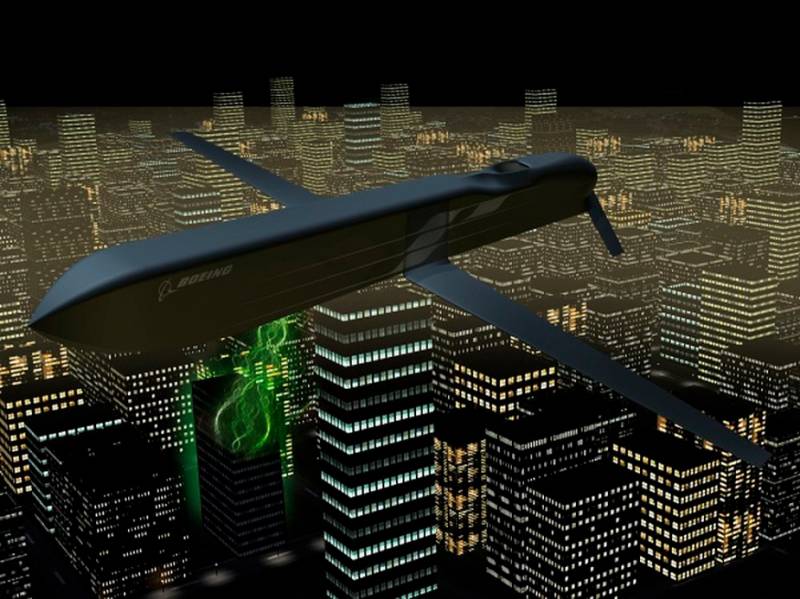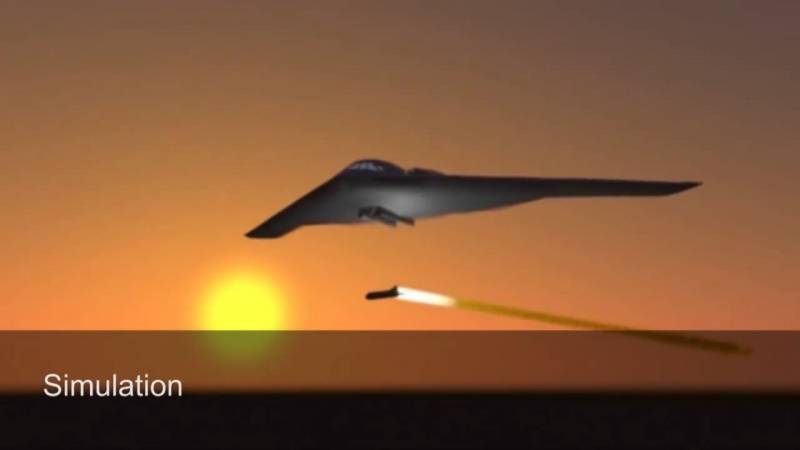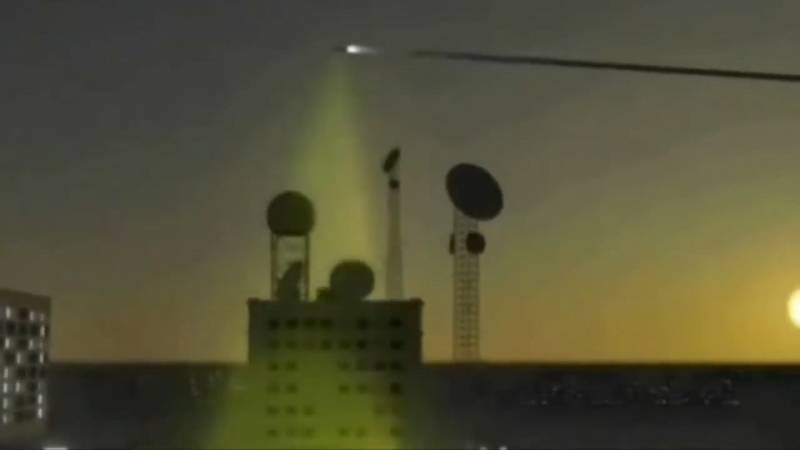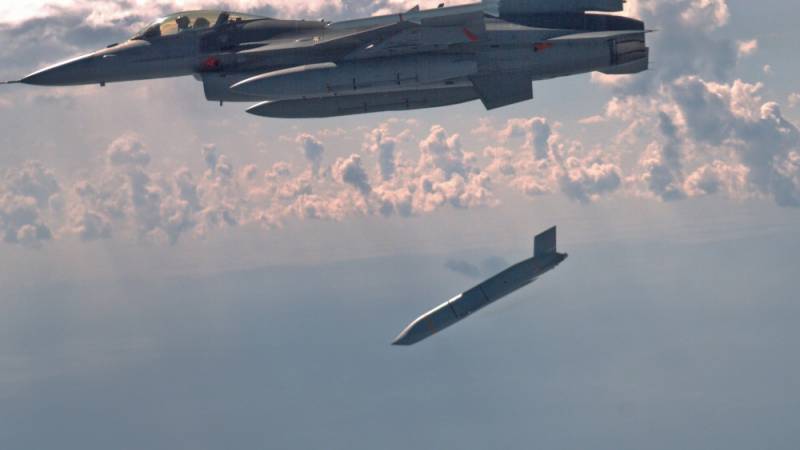HiJENKS electromagnetic warhead for the US Air Force and Navy
The United States is again trying to create a new model weapons, capable of hitting enemy electronic systems with a powerful electromagnetic pulse. A promising ammunition called HiJENKS is being created by the forces of scientific organizations of the Air Force and Navy. To date, he has reached field testing, and in the indefinite future, it is expected to be installed on a regular carrier in the form of one of the modern missiles.
Single ammunition
At the beginning of the last decade, the US Air Force, together with contractors, developed and tested a promising CHAMP (Counter-electronics High Power Microwave Advanced Missile Project) ammunition. He could create a powerful electromagnetic pulse (EMP) and hit enemy electronics in a significant radius. The AGM-86 ALCM cruise missile was used as a delivery vehicle for the product.
The CHAMP project had some shortcomings, which is why it was decided to create a new similar weapon. At the same time, a new structure joined the work. In 2017, the Air Force and the Navy launched the High Power Joint Electromagnetic Non-Kinetic Strike (HiJENKS) joint project of the “single (interspecies) high-energy electromagnetic strike system”.
The development of these weapons was entrusted to the Air Force Research Laboratory (AFRL) and the Office of Naval Research of the Navy (ONR). It was also supposed to attract commercial subcontractors. It was planned to spend about five years on research and design. At the beginning of the twenties, the first tests were planned.
While the development of the new HiJENKS project was underway, the Pentagon managed to abandon the previous sample. The fact is that the CHAMP product had some drawbacks and, according to the calculated characteristics, should have been inferior to the promising HiJENKS. In addition, in 2019, the Air Force abandoned the obsolete ALCM missile, and the older EMP munition ended up without a carrier.
As far as we know, at the moment HiJENKS is the main American development of its class. Other projects of this kind are proposed and considered, but have not yet been developed. All the efforts of AFRL and ONR are focused precisely on the "high-energy electromagnetic system."
First success
In early July, American specialized publications, citing representatives of the Air Force and their organizations, spoke about the latest achievements of the HiJENKS project. As reported, the new sample has been successfully brought to field tests. Moreover, these activities are nearing completion, and a new phase of the project should soon begin.
Tests of EMP weapons are carried out at the test site at the base of China Lake (pc. California). Several test explosions are planned with the collection of the necessary data. They take about two months to complete. At the same time, the details of the plans and the results of the tests have not yet been announced.
It is noted that ongoing tests are critical for the HiJENKS project as a whole. If the new EMP weapon confirms the calculated combat characteristics, work on it will continue. Their result will be the appearance of a full-fledged ammunition suitable for adoption by the air and naval forces. Otherwise, you will have to continue development or redirect efforts to other projects.
Technical features
The developers of the HiJENKS project have already revealed some of the technical details. At the same time, basic data, such as design features or technical characteristics, have not yet been announced. In addition, some of the disclosed information allows you to roughly determine individual parameters.
In general, the HiJENKS product is a special warhead capable of creating a high-power electromagnetic pulse. Known data on previous American developments suggest that this project again uses the principle of an explosive magnetic generator. In this case, HiJENKS is an explosive device with additional elements that provide the creation of EMP.
The main characteristics of such weapons remain unknown. The mass and power of the main charge are not reported. Also, the power of the generated pulse is not disclosed. It was only reported that, in terms of key characteristics, the HiJENKS product, at least, should not be inferior to the previous CHAMP. However, in his case, the most interesting information remained closed.
It is alleged that one of the goals of the HiJENKS project was to reduce the size and weight of the EMP charge in comparison with the previous development. The CHAMP product was intended for installation on the ALCM rocket, the payload of which, depending on the modification, reached 1360 kg. The warhead fit in a case with a diameter of 630 mm.
All this allows us to imagine the maximum possible dimensions and weight of the new HiJENKS warhead. At the same time, it should be taken into account that modern cruise missiles and other potential carriers of such charges impose more stringent requirements on the payload. For example, the AGM-158 JASSM missile has a body section of 450x550 mm and carries no more than 450 kg of cargo. Accordingly, she would hardly be able to raise the charge of CHAMP.
It should be noted that the issue of the delivery vehicle for the new HiJENKS charge has not yet been resolved. So far, the Air Force and Navy are planning to test and fine-tune these weapons, the results of which will determine the final dimensions and weight. Based on this, a suitable carrier or carriers will be determined. It is quite possible that the JASSM cruise missile or its extended-range variant JASSM-ER will receive this role - despite the limited size and carrying capacity.
The EMP modification of the AGM-158 missile can be used with a wide range of carrier aircraft. In the Air Force, tactical and strategic aircraft of various types, from F-16 or F-35 to B-2 and B-52, will be able to use it. In the Navy, the F / A-18E / F carrier-based fighter-bomber will be the only carrier of such weapons.
Intended Role
Thus, according to the results of the HiJENKS project, the US Air Force and Navy want to get a fundamentally new weapon. With its help, it will be possible to solve special tasks and hit a wide range of different targets in a specific way. In this case, we will not talk about the destruction of specific targets, but about the incapacitation of entire systems over a large area.
EMP ammunition is proposed to be placed on a missile of the JASSM (-ER) type. Accordingly, the HiJENKS product will receive all the advantages of such a weapon. It will be able to use all major US combat aircraft. In this case, a large combat radius and a high probability of breaking through enemy air defenses will be achieved.
When triggered, the HiJENKS warhead will have to create high-power EMP and hit enemy electronic systems. First of all, the developers have in mind the electronics of combat vehicles, army communications and control equipment, etc. In addition, energy infrastructure and general communications systems must suffer from such an impact. In this case, temporary or permanent disabling will occur within a certain radius from the place of detonation.
It is assumed that such a weapon will allow almost one blow to leave the enemy in a given area without radio equipment, and at the same time without communication, without detection capabilities, as well as with serious restrictions on the use of weapons. At the same time, the combat effectiveness of the enemy should drop sharply, which will seriously simplify the work of the allied forces and reduce the risks for them.
However, there are also negative features. Thus, it is noted that EMP weapons, including HiJENKS, are indiscriminate and can hit both military and civilian targets. Moreover, it is for non-military facilities that it poses a great danger - due to the lack of measures to protect against EMP. All this means that an electromagnetic attack can have serious collateral damage. It threatens civilian energy and communications, industry, medical facilities, and so on.
Weapons of the future
Thus, the United States continues to work on the topic of weapons based on an electromagnetic pulse and has already brought to the test the second sample of this kind. In the near future, the current stage of checks will end, and after that the further fate of the HiJENKS project will be determined.
How the current events will end is unknown. But the very fact of their holding gives the Pentagon a reason for optimism. The release of the warhead for testing shows that the project has advanced far enough. And this means that the Air Force and the Navy can already work out the issues of rearmament and make plans for the future. Whether it will be possible to proceed with their implementation will become known later.




Information